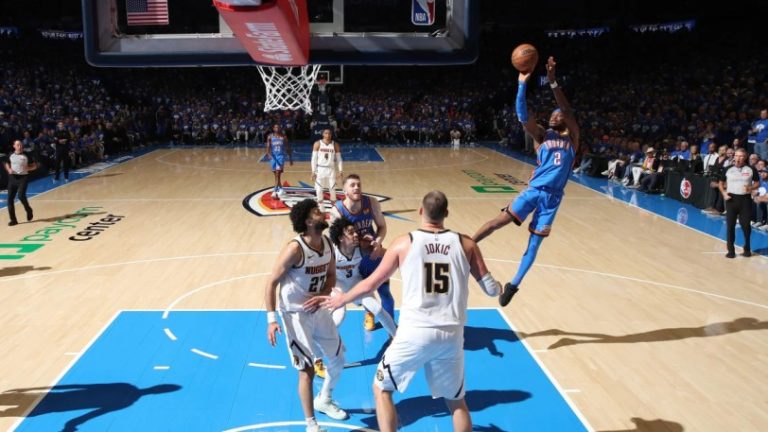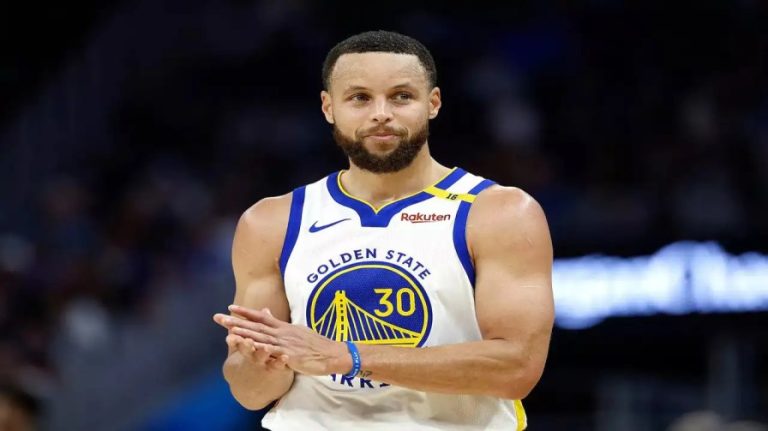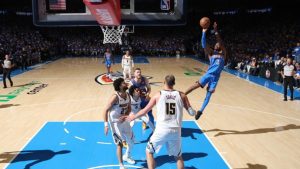Table of Contents
The Oklahoma City Thunder delivered a resounding statement in Game 1 of the Western Conference Finals, overpowering the Minnesota Timberwolves with a dominant 114-88 victory. While the Timberwolves showed flashes of brilliance in the first half, the Thunder’s resilience and second-half surge, fueled by superstar Shai Gilgeous-Alexander, proved to be the decisive factors. This opening win sets an exciting tone for what promises to be a captivating series.
A Tale of Two Halves: Wolves’ Early Spark Fades
The highly anticipated matchup between the top-seeded Thunder and the confident Timberwolves began with Minnesota looking like the more composed team. Despite the Thunder having played a grueling Game 7 just two days prior, it was the Timberwolves, fresh off a week’s rest, who seemed to have the early energy advantage.
Julius Randle was a revelation for the Timberwolves in the first half, exploding for 20 points and sinking five of his six three-point attempts. His hot shooting helped Minnesota build a 48-44 lead by halftime, leaving some observers to wonder if the extended rest had indeed benefited the Wolves. However, this promising start quickly dissolved in the face of OKC’s relentless defensive adjustments and offensive execution.
For more NBA Update Click here.
The Second-Half of Western Conference Finals
While Shai Gilgeous-Alexander struggled with his shot in the first half, hitting only 2 of 13 attempts, his impact transcended mere scoring. He continued to attack the basket, drawing fouls and getting to the free-throw line, which proved crucial in keeping the Thunder within striking distance. As a seasoned sports journalist with over a decade of experience, I’ve seen countless stars weather early storms, and SGA’s composure in the face of a slow start was truly indicative of his MVP-caliber season.
The second half was a different story entirely. Gilgeous-Alexander erupted for 20 of his game-high 31 points after the break, showcasing his dazzling array of drives, pull-up jumpers, and uncanny ability to finish through contact. His ability to shift gears and become a dominant scoring force is a testament to his mental toughness and skill. Alongside his scoring, SGA dished out nine assists and grabbed five rebounds, demonstrating his all-around impact.
Thunder’s Defense Locks Down the Wolves
The true hero for the Thunder, however, was their suffocating defense. After allowing Randle to dominate in the first half, OKC made crucial adjustments, particularly in containing the Timberwolves’ perimeter threats and packing the paint. Minnesota’s dynamic guard, Anthony Edwards, who had been averaging 26.5 points per game in the playoffs, was largely neutralized. He finished with just 18 points on 5-for-13 shooting, failing to make a significant impact, especially in the fourth quarter where he was held scoreless.
The Timberwolves’ offensive struggles were evident in their shooting percentages: a dismal 34.9% from the field and an even worse 29.4% from beyond the arc (15-for-51). The Thunder’s ability to force 19 Timberwolves turnovers, converting them into a decisive 31 points, highlighted their defensive prowess and opportunistic transition game. The combination of Luguentz Dort’s tenacity and the overall team effort made life incredibly difficult for Minnesota’s usually potent attack.
Why Did the Timberwolves Stumble?
Several factors contributed to Minnesota’s Game 1 collapse:
- Lack of Rhythm: Despite a week of rest, the Timberwolves appeared rusty and struggled to find a consistent offensive rhythm in the second half. Passes were late, and shots weren’t falling, especially from deep.
- Anthony Edwards’ Struggles: Edwards, the Wolves’ offensive engine, was visibly frustrated throughout the game. He picked up a technical foul for throwing the ball at Gilgeous-Alexander early on and seemed unable to consistently break down the Thunder’s defense. The Thunder’s defensive scheme effectively cut off his driving lanes and forced him into tough shots.
- Bench Production: Minnesota’s bench, which has been a strength throughout the playoffs, was largely ineffective. Players like Naz Reid, Nickeil Alexander-Walker, and Donte DiVincenzo combined for meager shooting percentages, providing little support for the starters.
- Foul Trouble: Jaden McDaniels fouled out in just 24 minutes, and Anthony Edwards also battled foul trouble, limiting their defensive impact and overall minutes. This played directly into the Thunder’s hands, allowing SGA to attack without facing their best defenders for extended periods.
What’s Next for the Series?
Game 1 proved that the Oklahoma City Thunder are a legitimate force, capable of overcoming early adversity and imposing their will defensively. Their youth and athleticism, combined with Gilgeous-Alexander’s star power, make them a formidable opponent.
For the Minnesota Timberwolves, this was a wake-up call. They will need to make significant adjustments, particularly in finding ways to free up Anthony Edwards and improve their overall offensive efficiency. As Chris Finch, the Timberwolves’ coach, noted, they need to “clean things up” and find patience on offense. The series is far from over, but the Thunder have certainly seized the early momentum.
FAQs
How many points did Shai Gilgeous-Alexander score in Game 1?
Shai Gilgeous-Alexander scored a game-high 31 points in Game 1.
What was Anthony Edwards’ performance like in Game 1?
Anthony Edwards struggled in Game 1, finishing with 18 points on 5-for-13 shooting and encountering foul trouble.
What were the key reasons for the Timberwolves’ loss?
The Timberwolves’ loss was primarily due to their sluggish second-half offense, poor shooting percentages (especially from three-point range), high turnover count, and the Thunder’s stifling defense.
How did the Thunder’s defense impact the game?
The Thunder’s defense was crucial, holding the Timberwolves to 34.9% shooting from the field, forcing 19 turnovers, and effectively neutralizing Anthony Edwards in the second half.
What is the significance of the Thunder’s Game 1 win?
The Thunder’s Game 1 win gives them early momentum and home-court advantage, putting pressure on the Timberwolves to make significant adjustments for the rest of the Western Conference Finals series.







